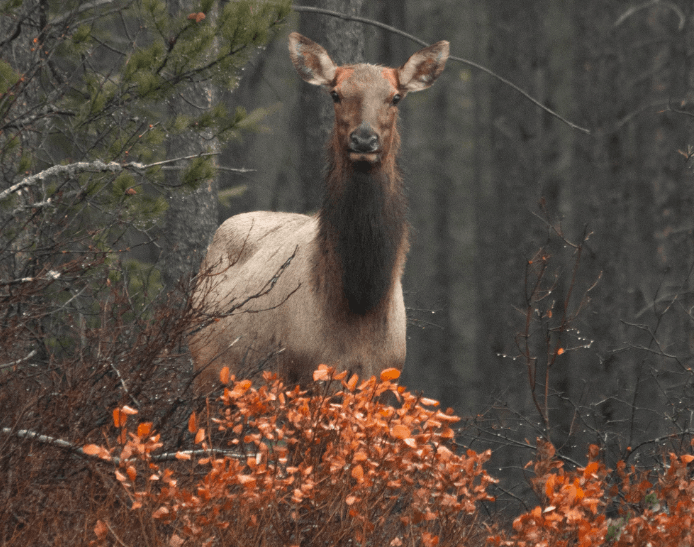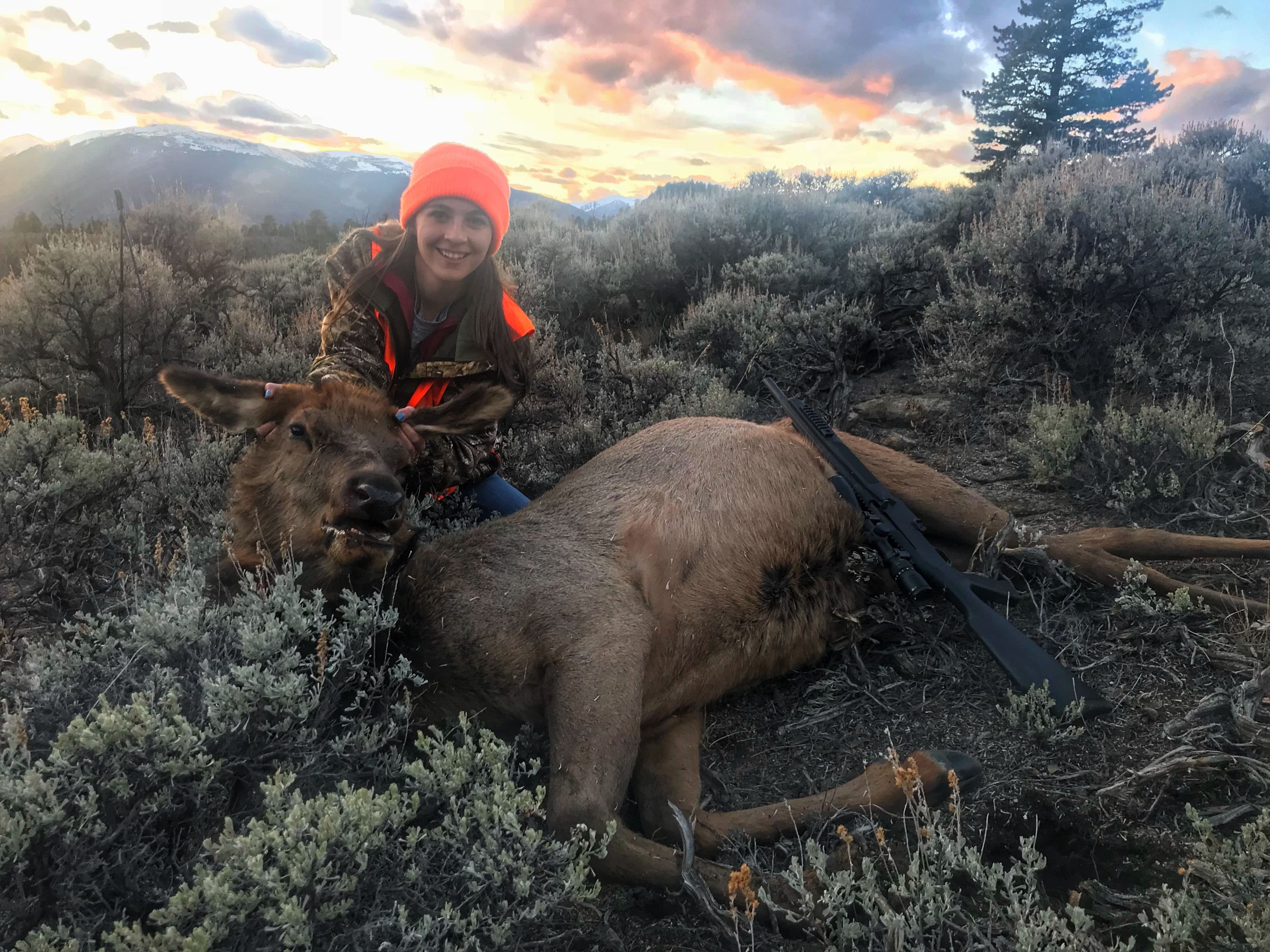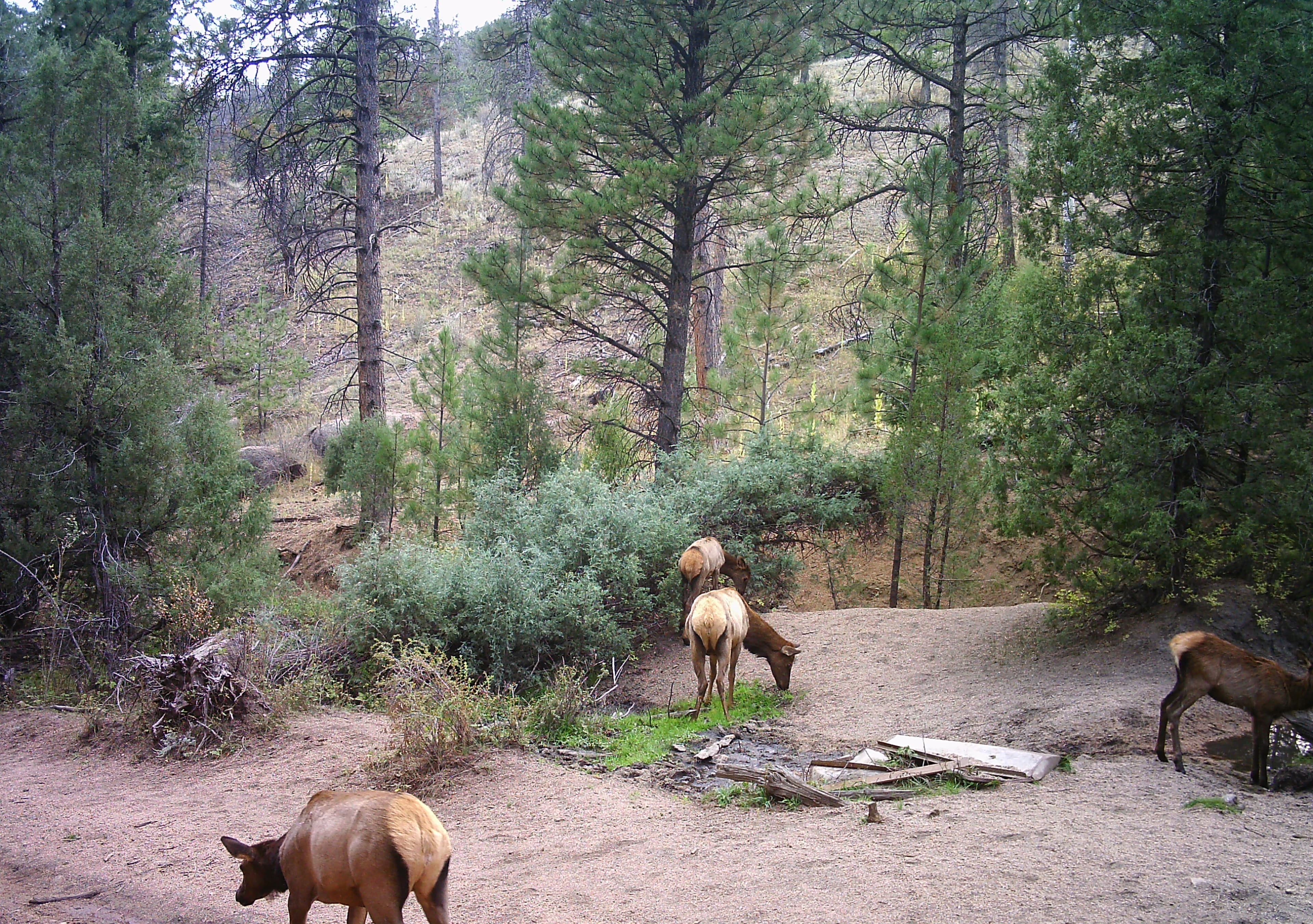Targeting Cow Elk for a DIY Hunt: An Accessible Adventure


Justin Hunold
10/25/2024
The allure of chasing trophy bulls often overshadows cow elk hunting, but targeting these majestic females offers a unique and thrilling experience that every hunter should consider. With numerous over-the-counter (OTC) and easy-to-draw tag opportunities across several states, a DIY cow elk hunt can provide a fulfilling challenge while contributing to your meat supply. In this article, we’ll explore some of the best states for cow elk hunting, unique targeting tactics, special considerations that make cow elk hunting a distinct and rewarding experience, and essential gear for mountain hunting adventures.
Why Target Cow Elk?
While many hunters dream of bagging a massive bull, there are several compelling reasons to focus on cow elk. For one, cows are more abundant than bulls, making locating and tagging them much more accessible. They often travel in larger herds, giving hunters a better chance to spot them in the wild. Plus, cow elk meat is not just delicious and tender, but also a fantastic source of protein for the freezer, making your mouth water at the thought of it.

Another key advantage is the lack of pressure. In many regions, the focus on bulls means that cow elk populations face less hunting pressure, allowing them to thrive and grow more accustomed to human presence. This familiarity can translate into more opportunities for hunters.
OTC and Easy-to-Draw Tag Opportunities
Several states shine when it comes to easy-to-draw or OTC tags for cow elk, allowing you to plan a successful DIY hunt with minimal hassle:
Colorado
Colorado is perhaps the crown jewel for elk hunting. With abundant public land and a healthy elk population, the state offers several units to purchase OTC cow tags during the second and third rifle seasons. The terrain ranges from rugged mountain slopes to open plains, so whether you prefer backcountry hiking or a more accessible hunt, Colorado has it all. You can find more information on Colorado's hunting licenses and regulations on the Colorado Parks and Wildlife website.
Utah
Utah's elk hunting is gaining traction, especially for those targeting cow elk. The general season in many units allows for OTC tags, making it a practical choice for those looking to get out in the field without the hassle of drawing a tag. During the early archery season, cows can be more vocal and visible, which provides excellent hunting opportunities as they mingle with bulls. Check out the Utah Division of Wildlife Resources for hunting licenses and regulations.
Idaho
Idaho boasts a rich elk hunting tradition, with many units offering OTC cow elk tags during the general season. The state's vast wilderness areas provide the perfect backdrop for your adventure, whether you're backpacking into the backcountry or hunting from established camps. Idaho's terrain is diverse, so research your unit ahead of time to identify the best hunting spots. For more details, visit the Idaho Department of Fish and Game.
New Mexico
In New Mexico, cow elk hunters can find OTC tags in select units during the general season. Known for its stunning landscapes and varied terrain, the state offers diverse hunting experiences, from high mountain ridges to rolling foothills. Focus on areas with abundant food sources, particularly during the late season when cows are looking to bulk up for winter. Visit the New Mexico Department of Game and Fish for more information on hunting licenses.
Wyoming
Wyoming is home to vast expanses of public land and offers OTC and draw options for cow elk hunting. The draw odds can vary significantly by region, so it’s wise to research the specific units and their tag allocation. Hunting in Wyoming’s diverse habitats—from mountain ranges to river valleys—allows for different approaches, making it a fantastic state for any elk hunter. Find more about hunting licenses on the Wyoming Game and Fish Department website.
Cow Elk-Specific Hunting Tactics
To increase your chances of success, here are some effective tactics specifically tailored for cow elk hunting:
Utilize Your Ears and Eyes
Cow elk are often more vocal than bulls, especially during the early season and rut. Use this to your advantage by listening to their calls, which can lead you to their location. Cow calls can be particularly effective when trying to bring cows closer. Additionally, focus on glassing from elevated positions. Cows tend to stay in open areas, particularly near water and food sources, so scanning these spots with binoculars can help you spot them before they spot you.
Herd Behavior
Understanding herd dynamics is crucial when hunting cow elk. Cows often stick together, especially in larger groups. When you spot one, there's a good chance more will be nearby. Use this knowledge to your advantage—set up at a distance where you can observe the herd's movements and behaviors before moving in for the shot. If you manage to take a shot, follow the herd's flight direction; other cows may linger, giving you another chance.
Still Hunting and Spot-and-Stalk Techniques
When hunting cow elk, adopting a still-hunting approach can be highly effective. Move slowly and quietly through areas where you suspect elk activity. Use natural cover to your advantage, and take your time to scan for movement. If you see a cow or herd, switch to a spot-and-stalk technique. Approach them cautiously, using terrain features to conceal your movements. Utilize wind direction to remain undetected—approaching from downwind is crucial for success.
Know the Food Sources
Cow elk are foragers and will travel considerable distances for food. Familiarize yourself with the vegetation in your hunting area, focusing on high-protein options like aspen leaves, grasses, and forbs in the spring and summer, as well as agricultural fields or conifer stands in the fall and winter. Set up near these food sources, especially during the early morning or late evening when elk are most active. Consider using trail cameras to monitor feeding patterns and identify peak times for elk movement.
Timing is Everything
Timing your hunt to align with peak activity periods can significantly improve your success. Early mornings and late afternoons are prime times for cow elk movement. Additionally, considering the lunar phases and weather patterns, elk tend to be more active during overcast conditions, making those days ideal for hunting. Pay attention to the temperature—cooler days often increase elk activity.
Use Decoys and Calls
In some situations, using decoys can entice cow elk into shooting range. Position a decoy in an open area to draw cows in, especially during the rut when cows seek companionship. Similarly, employing calls that mimic cow elk sounds—such as estrous calls—can provoke curiosity and bring them closer. Experiment with different calls to see what elicits the best response.
Patience and Persistence
Cow elk hunting can require patience. Unlike bull hunts, where the promise of a trophy may push hunters to take risks, cow elk hunting demands a more measured approach. Spend time observing and learning the terrain and elk behavior. Stay mobile but also take breaks in promising areas to wait for activity.

Essential Gear for Cow Elk Hunting
When heading into the mountains to hunt cow elk, having the right gear can make all the difference in your success and comfort. Here are some essential items to consider:
Preferred Rifle Calibers
Choosing the right caliber for elk hunting ensures a humane and effective kill. Some popular calibers among elk hunters include:
- .270 Win: A flat-shooting cartridge that offers excellent long-range performance.
- .308 Winchester: A versatile round suitable for various games, including elk.
- 6.5 Creedmoor: Known for its accuracy and flat trajectory, making it practical for long shots.
- 6.5 PRC: Offers high velocity and energy, ideal for those looking for precision at extended ranges.
- .30-06 Springfield: Versatile and powerful, suitable for various games, including elk.
- .300 Win Mag: Provides the energy for longer shots in open country.
- .338 Win Mag: Ideal for hunters seeking extra knockdown power, particularly in thick cover.
- .300 PRC: Designed for long-range performance with minimal recoil.
- 7mm PRC: Combines speed and flat trajectory for practical shooting at a distance.
- 7mm Remington Mag: A proven choice for elk hunting, offering excellent long-range capabilities.
Boots
Proper footwear is essential for mountain hunting, where comfort and support are paramount. Look for:
- Hiking or Hunting Boots: Choose waterproof options with good ankle support and traction. Brands like Kenetrek, Crispi, and Lowa offer excellent models designed for rugged terrain.
- Insulated Options: If hunting in colder weather, consider insulated boots to keep your feet warm without sacrificing mobility.
Calls
Having the right calls can be a game changer when trying to attract cow elk:
- Cow Calls: Look for options that mimic the vocalizations of cow elk. Brands like Primos and Rocky Mountain Hunting Calls offer a variety of effective calls.
- Electronic Calls: These can effectively cover larger areas and may include various elk sounds to attract cows.
Specialty Gear

Certain specialized gear can enhance your elk hunting experience in the mountains:
- Binoculars: A quality pair of binoculars (10x42 or 12x50) is essential for spotting elk from a distance. Look for models with a good field of view and low-light performance.
- Rangefinder: Knowing the exact distance toyour target is crucial for accurate shooting, so invest in a reliable rangefinder. Look for models that offer angle compensation and are lightweight for easy carrying in the field.
- Backpack: It is vital to have a durable, comfortable backpack with ample space for gear, food, and water. When you harvest an elk, look for hydration compatibility, adjustable straps, and meat-carrying capability.
- Game Bags: After the hunt, you'll need quality game bags to protect the meat while transporting it from the field. Look for breathable, lightweight materials that allow the meat to cool properly.
- Treestand or Ground Blind: Depending on your hunting strategy, you may want to consider bringing a portable treestand or ground blind to conceal yourself while waiting for cow elk to approach. A good setup can help you stay undetected and improve your chances of success.
- GPS Device or Map: While many hunters rely on smartphones for navigation, having a dedicated GPS device or physical map can be a lifesaver in remote areas with poor signal reception. Familiarize yourself with the terrain and keep track of your movements to avoid getting lost.
- First Aid Kit: Safety should always be a priority. A well-stocked first aid kit tailored for outdoor use can be invaluable in case of injuries in the field. Ensure it includes essentials such as bandages, antiseptics, and any personal medications you may need.
- Clothing Layers: The weather in the mountains can change rapidly, so layering is essential. Invest in moisture-wicking base layers, insulated mid-layers, and waterproof outer layers. Suitable gloves and a hat can keep you comfortable and focused on the hunt.
Special Considerations for Cow Elk Hunting
Hunting cow elk comes with its own set of unique considerations that every hunter should keep in mind:
Tagging and Regulations
Understanding the regulations for cow elk hunting is essential. Each state has specific rules, including hunting methods, seasons, and tagging requirements. Ensure you know your chosen state's regulations, especially regarding antlerless hunting guidelines. Always keep your hunting license and tag accessible while in the field.
Adaptability in the Field
Cow elk are often skittish than bulls, so you may need to adjust your tactics frequently. Be ready to change your approach based on their behavior. If you find yourself spooking cows, consider changing your location or technique—such as switching from still hunting to waiting in a ground blind or tree stand.
Meat Care and Processing
The work just begins once you’ve successfully harvested a cow elk. Properly caring for the meat is crucial to maintaining its quality. Plan by bringing the right gear, such as game bags, a reliable cooler, and tools for field dressing. If you’re hunting in remote areas, familiarize yourself with field dressing techniques and consider taking a meat processing course if you’re new to the game.
Conclusion
Targeting cow elk for a DIY hunt is accessible and incredibly rewarding. With numerous OTC and easy-to-draw tag opportunities in states like Colorado, Utah, Idaho, New Mexico, and Wyoming, there’s no shortage of places to pursue these remarkable animals. By employing specific tactics and understanding the nuances of cow elk behavior, you can enhance your chances of success and enjoy a memorable hunting experience.
So gear up, get out there, and immerse yourself in the thrill of targeting cow elk—you won’t be disappointed! With the proper preparation, knowledge, and gear, you're on your way to a successful elk-hunting adventure that will provide not just meat for your table but also memories that will last a lifetime.